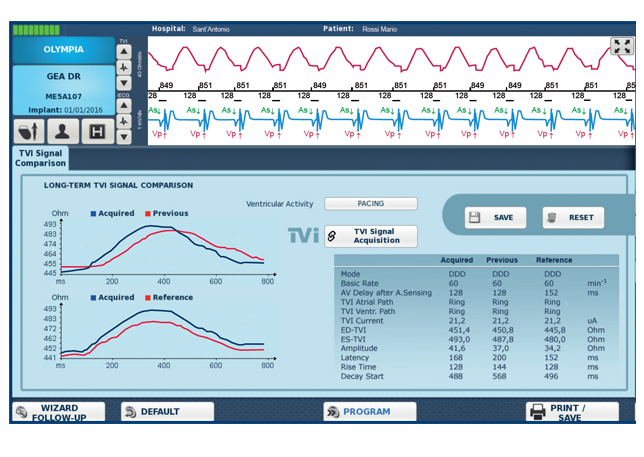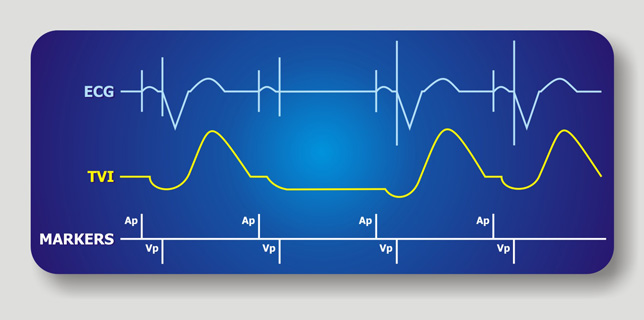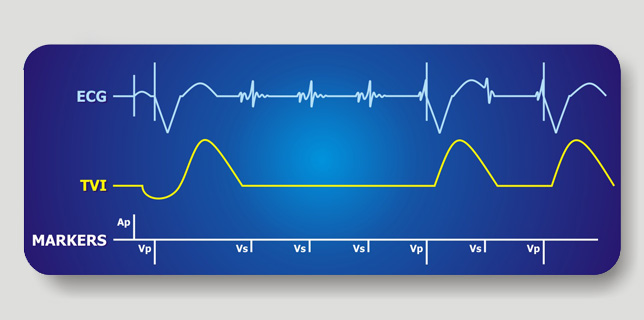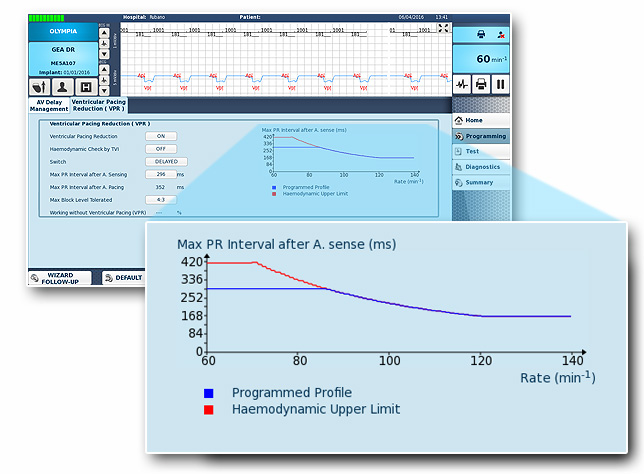Special functions:
Automatic calibration of TVI recording

The function allows the automatic individual regulation of TVI configuration and sampling current, starting from 3 months after implantation. This way, all TVI-related functions can easily be enabled.
Long-term comparison of TVI waveform
Averaged TVI signals recorded at different times and stored in the pacemaker memory can simultaneously be displayed to check for long-term hemodynamic stability.

Ejection check after ventricular pacing
The TVI signal is applied to confirm the actual occurrence of ejection after a ventricular pacing pulse. In the event of missed ejection, the pulse energy is increased to restore effective stimulation.

If the expected TVI increase is not recorded after a pacing pulse, failure of ventricular capture is assumed and the pulse energy is increased.
The pacemaker stores in memory the number of no capture alarms and the trend of pulse parameters.
Ejection Check After Ventricular Sensing
The TVI signal is applied to confirm the actual occurrence of ejection after a ventricular sensing event. In case of missed ejection, the pacing mode is switched over from any ventricular-inhibited to the corresponding ventricular-triggered mode, in order to prevent the risk of false inhibition induced by oversensing.

If the expected TVI increase is not recorded after a series of 3 ventricular sensing events, any V-inhibited pacing mode is switched over to the corresponding V-triggered one, in order to ensure safety stimulation.
V-triggered and inhibited pacing are alternated at every beat, so that the programmed pacing mode is re-established as soon as a reliable sensing function is restored.
The number of no-ejection alarms after ventricular sensing is stored in memory.
Prevention of ventricular pacing
In the presence of intrinsic AV conduction, the minimal incidence of right ventricular pacing is ensured by automatic switching over from dual-chamber to atrial only pacing.
The maximum intrinsic PR interval allowed is shortened as a function of cardiac rate, to prevent the risk of atrial systole with closed AV valves.

The actual presence of intrinsic ventricular activity can optionally be tested by TVI-based ejection check.

Recognition of catheter type and implantation date
The pacemaker can recognize the polarity of the implanted leads and store the implantation date in memory.
Automatic polarity switch
In case of pacing impedance measurements outside the expected normal range, pacing and sensing polarities are switched to unipolar.
Products | Technology | Support | Contacts
